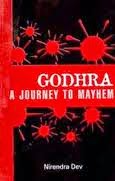This piece was also run by www.mattersindia.com
Finding similarities between Rahul and his uncle Sanjay Gandhi!
In one of the
historic and most crystal clear mandate since 1984, the BJP was handed over a
landslide victory. “Politicians would soon run out of adjectives to describe
the election outcome….,” wrote my Editor, Ravindra Kumar, for ‘The Statesman’
in his piece the next day.
The ‘Modi wave’ – dismissed by Congress and
other regional players like Mamata, Nitish and Lalu Prasad – and which
personified the anti-incumbency anguish, swept aside many previous records.
The Congress
decimation has turned out to be worst in its 129-year-old history and in the 17th
year of Sonia Gandhi’s career. Reduced to mere 44 just 7 seats more than
Jayalalitha’s AIADMK and 10 seats more than Mamata Banerjee’s Trinamool
Congress, normally, with any party by now the
clamour should have grown on what would happen to the Congress President Sonia
Gandhi and her son Rahul Gandhi. Efforts have been made to protect the dynasty. Likes of Divijay Singh got into actions. The family retainer or so, Manishankar Aiyar called Narendra Modi ‘Adolf
Hitler’ hours before he took over as the Prime Minister.
It’s
the same Mani who in January 2014 screamed at the peak of his voice that Modi
cannot ever become Indian Prime Minister and that he was free to distribute tea
at the AICC session.
Today,
Congress leaders in isolation and in separate pockets making noises especially
against Rahul Gandhi. Even Mizoram chief minister Lal Thanhawla, a Congressman
of many years and a Christian himself, has lambasted the party leadership of
the manner it has been handling the defeat.
His
eloquent oneliners are more than the normal reactions from disgruntled Congressman.
Lal
Thanhawla said the party
“paid for its misdeeds” and it “does not know how to face defeat”. He added he
has written to Sonia to refrain from blame-game in the party and rather
introspect instead. “In that way, the defeat we faced is good for us,” he said.
Now
where does this lead to? In my opinion, the Congress leaders’ disgruntlement is
more against the Congress vice president Rahul Gandhi, whose ‘ability’ to
deliver for the grand old party is now no longer a state secret.
An
honest analysis of 2014 Mandate would make it amply clear that no single factor
has contributed more to the downfall of Congress party in these elections than
Rahul Gandhi and his flirting with failures.
As
an ardent student of Indian elections, I find some similarity emerging between
Rahul and his ‘illustrious’ uncle the Late Sanjay Gandhi though as
personalities both are from diametrically different stocks.
So has Sonia Gandhi
emulated her mother-in-law Indira Gandhi in displaying her unquestionable love for a son, who
is today seen as a political liability?
The hapless Kerala Congressman TH Mustafa’s unceremonious
suspension is a case in point.
Old
timers would vouch with me that on the eve of 1977 elections when Indira Gandhi
was cautioned by her coterie members like P N Haksar and Subhadra Joshi,
Indira’s response used to be: “Those who attack Sanjay attack me”.
If
inside reports from AICC are to be believed, Sonia almost took the same line when
at the parliamentary party meeting she pulled up Milind Deora for speaking out
of line when the former South Mumbai MP did some plain speaking!
So
does it bring us back to the agonizing tale of a mother’s blind for her son?
In
2012, Time magazine had written acidly, "Nobody really knows what he is capable of, nor what he
wishes to do should he ever attain power and responsibility. The suspicion is
growing that Mr (Rahul) Gandhi himself does not know”.



























